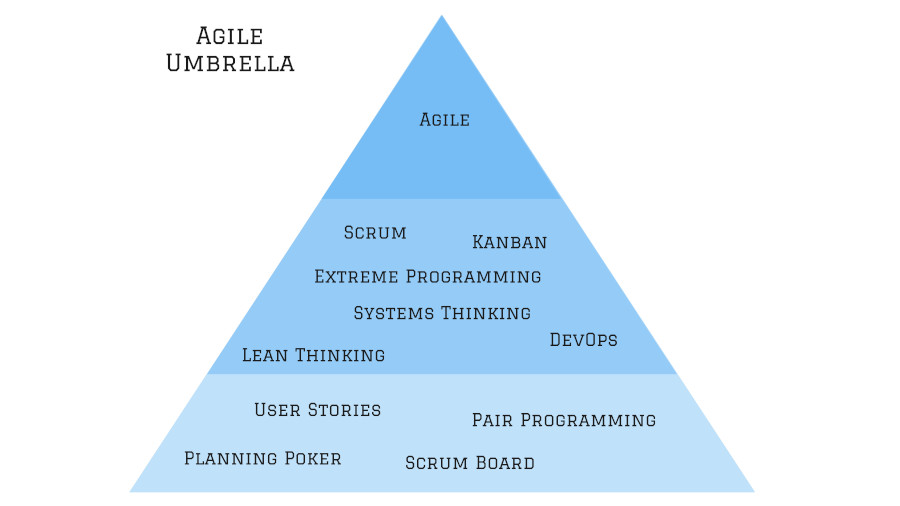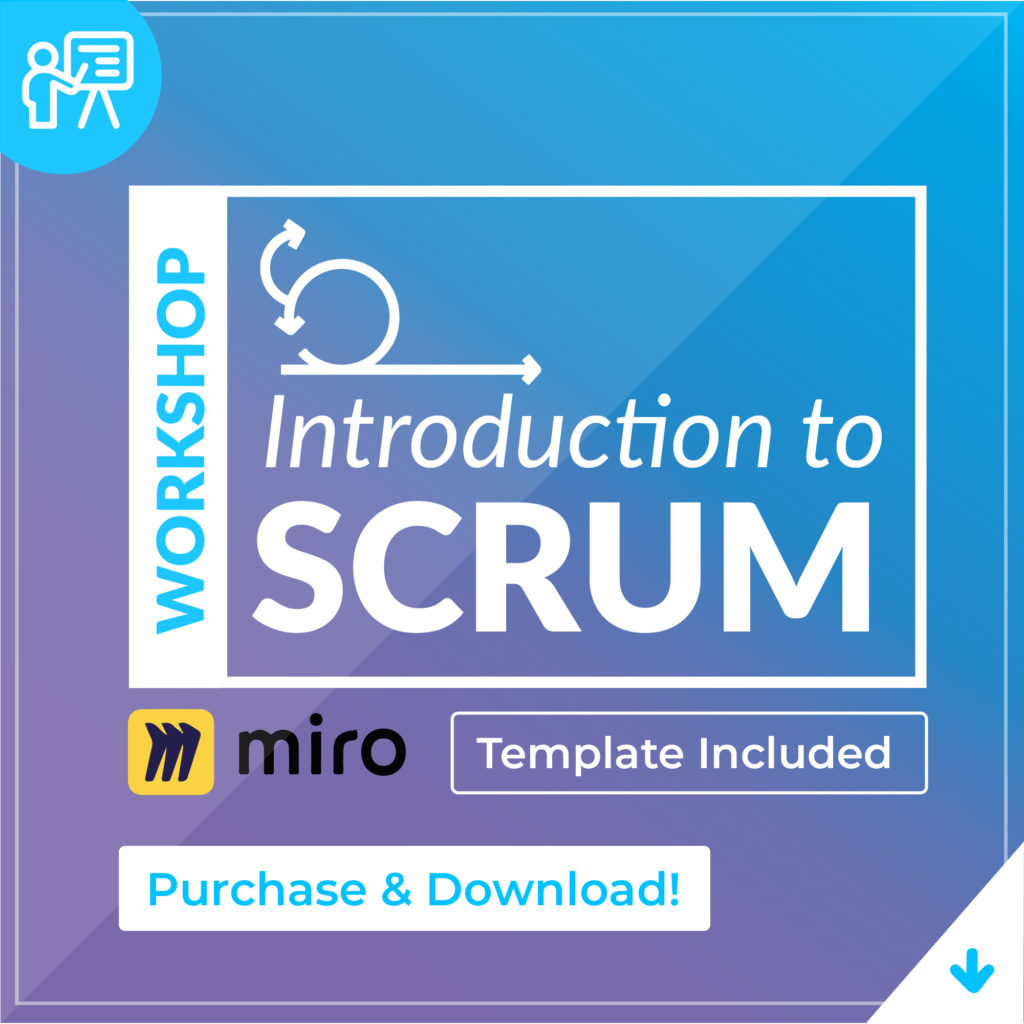We hear the terms Scrum and Agile alongside each other all the time. They don’t really mean the same, even if sometimes they are used interchangeably (they shouldn’t 🤫). Let’s explore what Scrum is, what Agile is, and what Scrum in Agile is.
To set the things straight right away and give you simple differentiation between the two:
- Agile is a mindset, a different way of looking at work, managing people and projects, measuring success.
- Scrum is a framework that allows team and organizations become more Agile.
Watch the video to learn more about what is Scrum in Agile.
The Agile Umbrella / Pyramid
Here is an easy explanation of what is Scrum in Agile that I use in the video (and that you can use too to explain it to your team):

There is a clear distinction between various concepts that are associated with agility. Don’t mix them up – they don’t taste good that way.
We can put “Agile” at the top of the pyramid as an overarching concept.
Under it we can add various Agile frameworks. These include: Scrum, Kanban, Extreme Programming, Lean Thinking, System Thinking, DevOps, and many others.
Scrum is the one that is the most popular frameworks, and it has been proven to help with Agile maturity.
Under the umbrella of frameworks we can find various practices. While these practices might not be a part of any particular framework, they can be very helpful in implementing the Agile mindset.
This and more can be found in my workshop guides “Introduction to Agile” and “Introduction to Scrum“.
Check them out in my store to learn yourself and to teach your team.
The guides include images, templates, and in-depth explanations to help you facilitate a workshop.
The Agile Manifesto
As I mention in the video, the Agile Manifesto started the whole idea of agility with it’s four values and twelve principles.
4 Agile Values
- Individuals and interactions over processes and tools
- Working software over comprehensive documentation
- Customer collaboration over contract negotiation
- Responding to change over following a plan
12 Agile Principles (shortened)
- Focus on early customer satisfaction
- Implementing change for competitive advantage
- Delivering working product frequently
- Constant collaboration between business and development
- Building the environment of trust
- Encouraging direct communication
- Measuring progress based on value for customers
- Supporting sustainable working pace indefinitely
- Focus on technical excellence and good design
- Reducing wasted effort and time
- Creating self-managing teams
- Reflecting and adjusting approach and processes on a regular basis
Every value and principle needs to be applied to how the organization works. These are not just motivational words, these are practical.
Since the Agile Manifesto itself doesn’t give us a clear guidance on how to apply it, we can use frameworks like Scrum to help. This is the place of Scrum in Agile.
👉 If you would like to learn the practical application of Agile values and principles and get guidance on doing it yourself, check out my online course “Fundamentals of Agile“. There I walk you through each element of agility with real-life examples and metaphors. I also provide you with in-depth workbooks to help you apply your learnings.
A few words about Agile practices
I know I have already mentioned it before, but I think it makes sense to talk about it here too.
Not every Agile practice that exists have to be implemented in every framework. Basically, not everything is Scrum, for example.
In the video I mention user stories, planning poker or story points, Lean Canvas, and others.
Many teams use these practices by default because they are extremely popular and are used by almost every single team I worked with. However, remember, that these are just practices that sit at the very bottom of the Agile umbrella. Don’t blindly implement them, and instead, observe your team to see which practices will be helpful.
Share your thoughts. How does your organization and team see Scrum in Agile?




